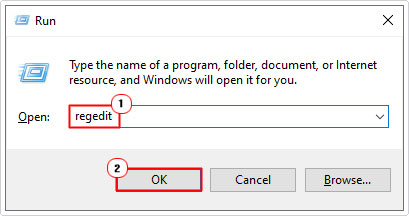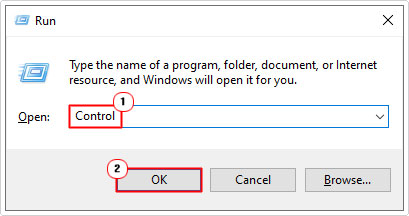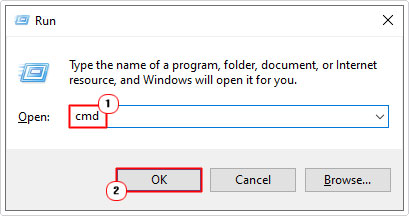| Attention Before you read this post, I highly recommend you check out my resources page for access to the tools and services I use to not only maintain my system but also fix all my computer errors, by clicking here! |
The local device name is already in use is an error notification that appears when the end user attempts to access a mapped drive (on a shared network). Typically this will result in a disconnection of the targeted drive. This means, you will be unable to access the drive, along with the files that are contained in it.
The exact error notification usually looks something like the following:
An error occurred while reconnecting <DRIVE> to <PATH> Microsoft Windows Network: The local device name is already in use. This connection has not been restored.
Despite how common this error is, there’s not very many people that are familiar with why it occurs. So, for the sake of clarification, I will be covering the most common causes of the local device name is already in use.
So, let us begin.
What Causes The Local Device Name Is Already In Use Errors?
In the vast majority of cases, users will encounter this error when attempting to access files from a mapped drive.
For this reason, it can be rather difficult figuring out what exactly is causing the problem. This is crucial, as knowing the cause, can better help you determine a solution.
That said, the most common causes, are as follows:
- The server or system lacks sufficient space: It’s possible the mapped drive is on a server (or system) that lacks sufficient space.
- Drive Unassigned: The local device name is already in use may appear if the mapped drive doesn’t have a properly assigned drive letter
- Drive mapping issue: An issue may have occurred during the initial mapping process, resulting in the error notification you know.
- File and Print Sharing is being blocked or disabled: If you have a firewall that is blocking the file and print sharing service, it can oftentimes result in this error.
Other circumstances in which this error may occur include, attempting to remotely access a mapped drive through a VPN.
Now, with all of that out of the way, the good news is that this problem is totally fixable. So continue reading, for those much desired solutions.
How to Fix It
In this section of the tutorial, you will find a rundown of methods that you can apply right now to fix the local device name is already in use issue.
Note: The solutions have been arranged in order of effectiveness and ease of execution.
So, let’s get started.
Run Windows Repair Tool to Fix the Local Device Name Is Already In Use
If your system is currently bogged down, running slower than usual, displaying a variety of issues and errors (such as the local device name is already in use), then you should definitely consider using a Windows repair tool.
The tool I have in mind is called Advanced System Repair Pro; and as the name states, it is an advanced and powerful repair tool. Capable of fixing a plethora of issues and errors on your Windows operating system.
With a single scan, it can detect virus infections, BSOD errors, network issues, runtime errors and much more.
This tool is also equally adept at boosting your systems performance.
So, if that’s something that interest you, visit the link below:
CLICK HERE TO CHECK OUT ADVANCED SYSTEM REPAIR PRO
 The solution(s) below are for ADVANCED level computer users. If you are a beginner to intermediate computer user, I highly recommend you use the automated tool(s) above! The solution(s) below are for ADVANCED level computer users. If you are a beginner to intermediate computer user, I highly recommend you use the automated tool(s) above! |
Remap Drive
The recommended solution to the local device name is already in use error notification (as proclaimed by Microsoft) is to remap the drive.
Usually, the operating system will assign a drive letter during the mapping process. However, there are instances, when the drive letter may already be assigned to another drive. In situations like this, you’ll get a drive conflict.
To rectify this situation, the end user will need to remove, then recreate the mapped drive.
If you do not know how to do that, you can find step-by-step instructions on drive remapping, from my post on fixing error 0x80070043.
Erase Registry Key
The Windows registry is a remarkable, complex and integral component of the operating system. However, despite its many pluses, it’s not without its flaws. One of such, is its pungent for accumulating redundant entries.
In this instance, it is possible the local device name is already in use error is occurring as a result of a redundant entry. Thus, as a solution, you should consider pinpointing and removing it.
Fortunately, this isn’t something you’ll need to do by yourself. As the exact instructions are outlined below:
1. Boot into your system as a full administrator.
2. Then press  + R, type regedit and click on OK.
+ R, type regedit and click on OK.

3. This will bring up Registry Editor, from here, go to the following path:
HKEY_CURRENT_USER\Software\Microsoft\Windows\CurrentVersion\Explorer

4. Now, on the left pane, scroll down, locate then right-click on MountPoints2 and select Delete.

5. Lastly, close Registry Editor and restart your system.
Re-Assign Drive Letter
Whenever a drive is mapped, a letter is assigned to it, as a form of identification. If this drive letter conflicts i.e. is accidently assigned to a different drive, then it can cause the local device name is already in use error to occur.
Fortunately, like remapping your drive, you can get around this problem, by assigning a new, unique drive letter to the conflciting drive. Which should effectively fix the problem.
To do this, follow the steps below:
1. First, boot into your system as a full administrator.
2. Next, right-click on the Start button and select Disk Management.

3. This will bring up the Disk Management applet, from here, right-click on the conflicting drive and select Change Drive Letter and Paths.

4. A Change Drive Letter and Paths for <DRIVE> dialog box will pop up. From here, select the Drive, then click on Change.

5. Another small Change Drive Letter or Path box will appear. Besides the checked Assign the follow drive letter, use the drop-down menu to select a different DRIVE LETTER. Then click on OK.

Note: Consider using a more obscure drive letter, to prevent this problem from resurfacing in the future.
6. Close Disk Management, then verify whether or not it has fixed the error.
Enable File & Printer Sharing
If File and Printer Sharing has been blocked by your firewall, then it can result in the local device name is already in use error appearing.
If you use a third-party firewall tool, then I suggest you consult its manual on how to unblock Windows services.
For those of you who use Windows Defender Firewall, you can follow the steps below:
1. First, ensure you’ve booted into your system as a full admin.
2. Then press  + R, type Control and click on OK.
+ R, type Control and click on OK.

3. This will bring up the Control Panel, from here, type Firewall into the Search Control Panel box, then click on Allow an app through Windows Firewall.

4. Allowed Applications should appear, now, click on Change settings. Then scroll down till you find File and Printer Sharing and make sure the box next to it is ticked and the box for both Private and Public is ticked. Then click on OK.

5. Lastly, restart your system.
Reinitialise Computer Browser
If the local device name is already in use error continues to rear its ugly head, even after attempting all the solutions above, you may want to try one last method. That is, the re-initialisation of the browser.
There have been instances when the error can be attributed to an incorrect browser setting interfering with the mapped drive. In situations like this, you can fix the problem by reinitialising its.
To do that, follow the steps below:
1. Boot into your system as an admin.
2. Then press  + R, type cmd and press CTRL + Shift + Enter.
+ R, type cmd and press CTRL + Shift + Enter.

3. This will bring up Command Prompt, now type the following command below and press Enter.
Net stop "Computer Browser"
4. Wait for the process to complete, then type the next command below and press Enter.
Net start "Computer Browser"
5. Now, close Command Prompt, and check whether it has fixed the error.
Are you looking for a way to repair all the errors on your computer?

If the answer is Yes, then I highly recommend you check out Advanced System Repair Pro.
Which is the leading registry cleaner program online that is able to cure your system from a number of different ailments such as Windows Installer Errors, Runtime Errors, Malicious Software, Spyware, System Freezing, Active Malware, Blue Screen of Death Errors, Rundll Errors, Slow Erratic Computer Performance, ActiveX Errors and much more. Click here to check it out NOW!

